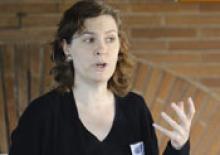Crawford Identifies Historic Parallel Between Electricity and Fiber
Susan Crawford recently wrote for the Blog of the Roosevelt Institute, where she spent the last year as a Fellow. She draws on the history of electrification to remind us that the impasse we have in expanding great access to the Internet to everyone is not a novel problem.
Crawford emphasizes the similarities between the electrification of rural America in the 1930s and the need for ubiquitous high-speed Internet access today. Crawford sees an almost identical reality as she compares the world of broadband and the attitude toward electricity in the 1930s:
In 1920 in America, unregulated private companies controlled electricity. The result? 90 percent of farmers didn't have it, at the same time that all rich people in New York City did. And it was wildly expensive in many places. Although it's now considered an essential input into everything we do, at the time electricity was seen as a luxury; the companies served the rich and big businesses, and left everyone else out.
Crawford notes that in the '30s, it was strong and thoughtful leadership that led the charge to turn the lights on in rural America. It ws not inevitable - it took the hard work of many people dedicated to a better tomorrow. In fact, the Rural Electrification Administration was created only after many states had already created their own electrification programs, creating valuable lessons for those that came after.
As many of our readers know, local authority in one state after another has fallen to the armies of lobbyists recruited by AT&T, Verizon, Comcast, and others at the top of the telecommunications heap. South Carolina and California recently joined the list of states where the legislature abandoned the public interest in favor of a few corporate interests.



